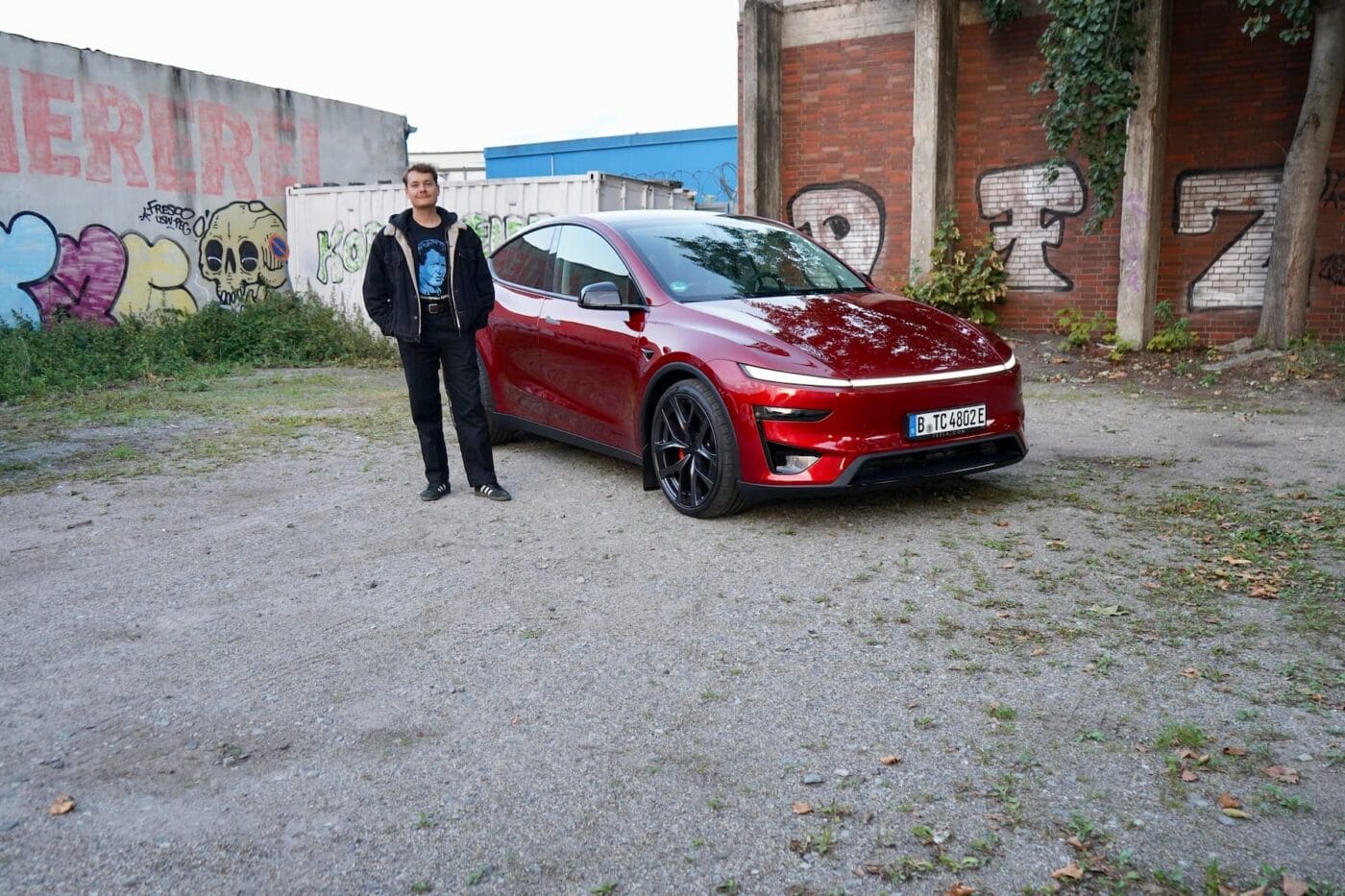
Tesla Model Y Performance review – A perfect blend of driving thrill and everyday practicality
When it comes to the sporty top versions of a car model, one thing is certain: when a model change is due, the successor will usually outperform its predecessor in terms of power. The new Tesla Model Y Performance breaks this tradition. After the Americans thoroughly revamped their highest-volume model as part of the ‘Juniper’ facelift, the sportiest version of the mid-size SUV also underwent a refresh and was launched at the end of August.
It came as a surprise that the data sheet suddenly showed a peak output of 338 kW (460 hp) instead of the previous 393 kW (534 hp). However, Tesla states that thanks to the new performance powertrain, the model will offer 16 per cent more torque and 32 per cent more sustained power, while energy consumption has been reduced.
0 to 100 in 3.5 seconds
Together, the two motors deliver 741 Nm of torque, compared with 660 Nm in the predecessor. Just a few days after the launch of the new Model Y Performance, I had the opportunity to put the brand-new flagship of the Model Y range through its paces in everyday use and on long journeys.
The performance was well balanced and showed few weaknesses. The SUV from the Brandenburg Gigafactory in Grünheide could almost be described as a true all-rounder, managing the balancing act between everyday comfort and, when needed, raw driving performance exceptionally well.
According to Tesla, it sprints from zero to 100 kph in just 3.5 seconds. We didn’t time it with a stopwatch, but the acceleration definitely puts a strain on the passengers’ neck muscles. Passengers with little experience of electric cars are particularly impressed by the ferocious acceleration. In no time at all, the speedometer reaches the top speed of 250 kph, at which the Model Y still sits surprisingly comfortably in the fast lane.
| Tesla Model Y Performance | |
|---|---|
| Drive | AWD |
| Power | 338 kW |
| Torque | 741 Nm |
| Acceleration | 3.5 s |
| Top speed | 250 kph |
| WLTP–Range | 580 km |
| Battery | 82 to 84 kWh |
| Charging DC | 250 kW |
| Charging time DC 10-80% | 29 min |
| Price in Germany | 62,970 euros |
Dynamics meet acceptable residual comfort
Even when taking corners at speed, the tall SUV body shows little tendency to roll. The chassis has been noticeably improved compared with the pre-facelift Model Y. Despite its sporty ambitions, it still offers acceptable residual comfort. Tesla’s revamped bestseller is by no means a saloon, but the bouncing behaviour of the original Model Y is definitely a thing of the past.
Even cobblestones don’t trouble the chassis thanks to the adaptive dampers. However, the engineers still haven’t managed to eliminate one weakness. When cobblestones meet uneven ground, it feels as if the vehicle is rocking.
Overall, the Tesla Model Y is a good touring car, partly thanks to its significantly improved noise insulation. Even at high speeds, the interior remains pleasantly quiet.
Surprisingly responsive steering
The steering has three levels of adjustment – at the highest level, it requires almost BMW-like steering effort. It is also precisely tuned and provides a surprising amount of feedback for an electric car, giving it almost a sports car feel when needed. Added to this are powerful brakes with a pedal feel that seems less synthetic than before – the car’s hardware gives the driver a feeling of confidence.
The same cannot be said without reservation for the assistance systems, including the Autopilot. Even though Tesla likes to portray itself as a pioneer in autonomous driving, the assistance systems leave you with mixed impressions. When the Autopilot is activated, you sometimes get the feeling that the system could make an unpredictable manoeuvre at any moment.
The adaptive cruise control generally works reliably and smoothly. However, it caused a moment of panic on a motorway exit: despite clear signage, the vehicle accelerated again just before the bend, even though I had already hit the brakes hard.
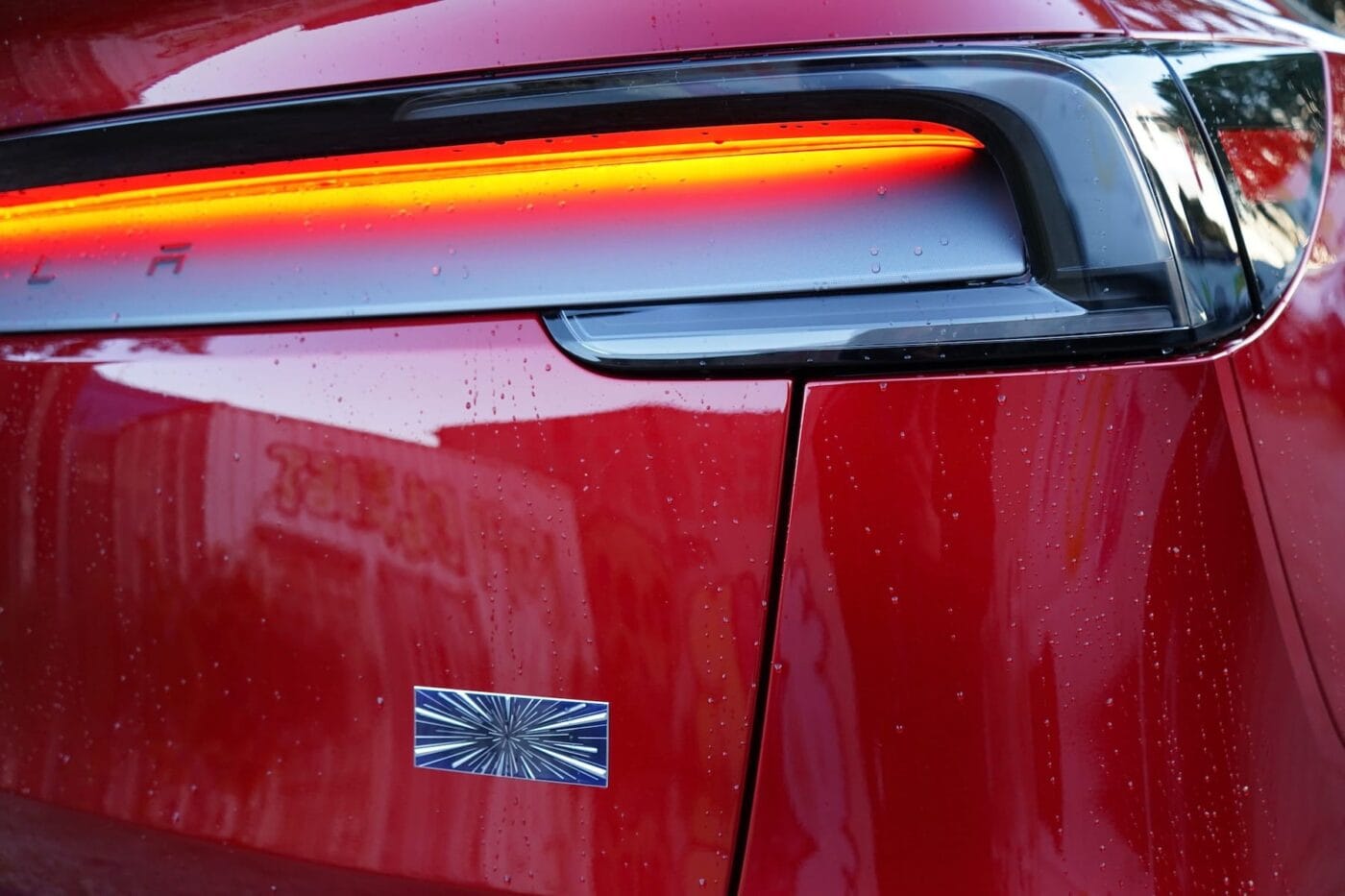
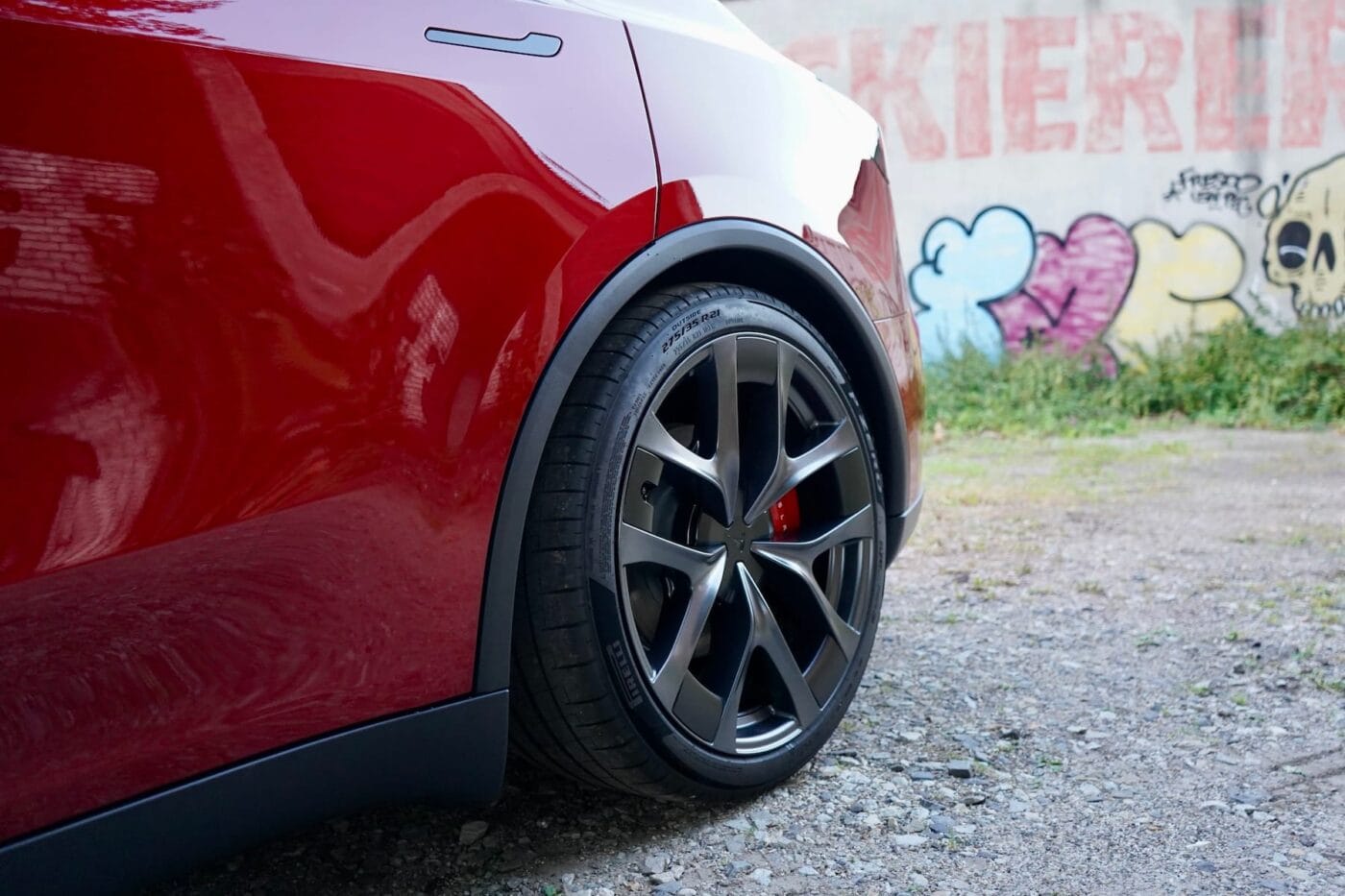

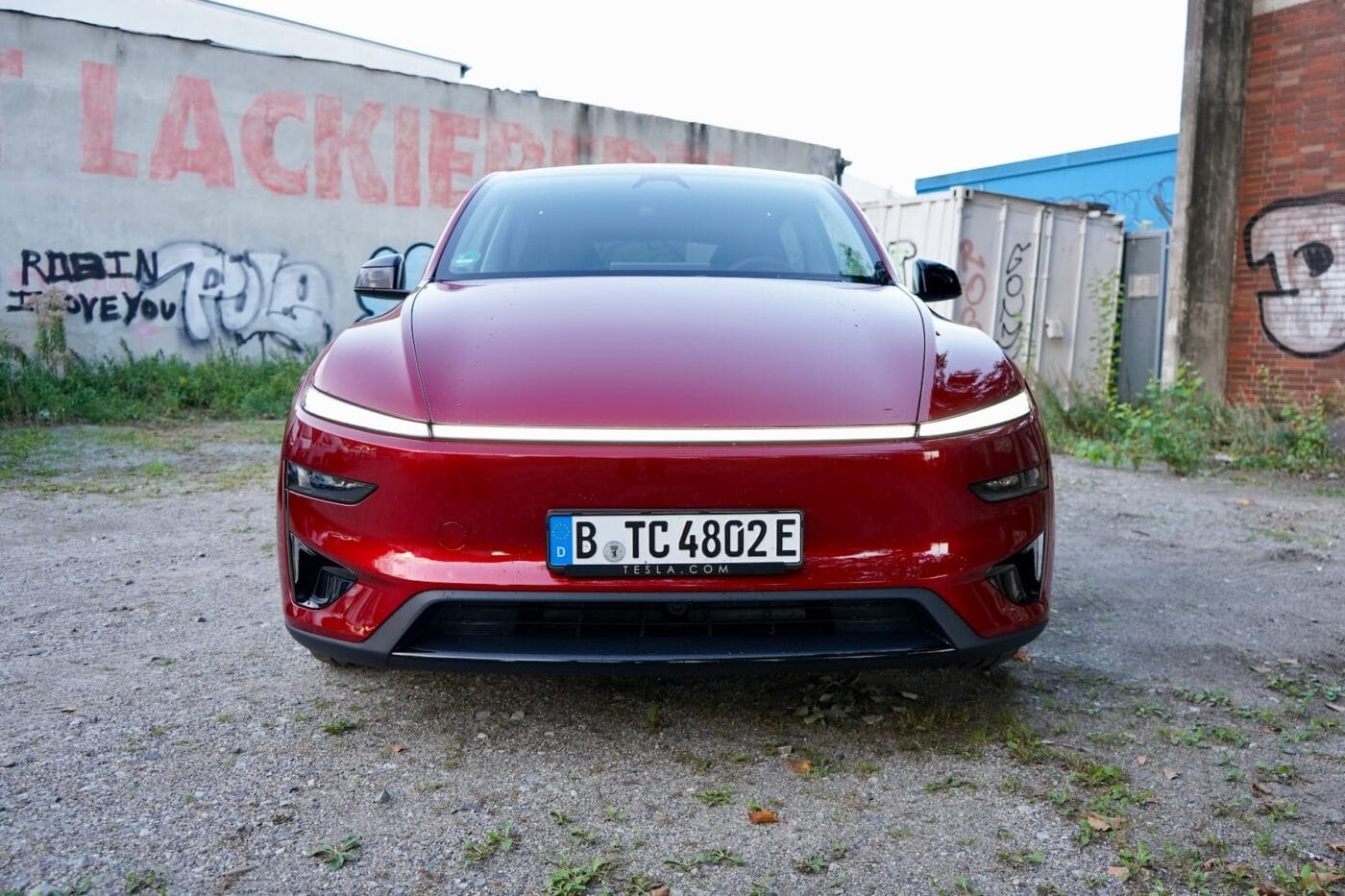


Efficient despite high performance
Tesla states the WLTP range for the new Model Y Performance as 580 kilometres. Even if that’s not entirely realistic on the motorway, the sport version of the SUV is definitely a capable long-distance car. Despite driving at a fairly brisk pace, one battery charge easily covered the approximately 300 kilometres from Berlin to Hamburg. I started with a charge level of 90 per cent, and when I arrived, the display still showed 15 per cent remaining.
On the return journey, I significantly increased my average speed thanks to a clear stretch of motorway. After starting in the Hanseatic city with a 95 per cent charge, I rolled into the Supercharger station on the EUREF Campus in Berlin-Schöneberg with 4 per cent SOC remaining. After around 700 test kilometres, the infotainment screen showed an average consumption of 19.6 kWh per 100 kilometres.
Although this is significantly more than the manufacturer’s claimed 16.2 kWh, the figure is acceptable given the high proportion of motorway driving and the relatively high speeds. In city traffic, the SUV even comes in well below the manufacturer’s figure. If you take it easy, you can achieve around 15 kWh per 100 kilometres.
At the Supercharger, the Model Y Performance did not reach the factory-specified peak charging power of 250 kW. The charging curve peaked at 207 kW at around 10 per cent, then dropped off quickly. From the 50 per cent mark onwards, the charging power slipped into double digits, and at 80 per cent it was still at a modest 50 kW. The charging cycle from 10 to 80 per cent took around 32 minutes. During this time, the new battery with LG cells absorbed a total of 62 kWh of electricity.
Even though this is perfectly adequate for long distances, the Model Y’s charging performance is now only average by current standards. The latest update has done nothing to change this. Some competitors from Asia now offer higher charging capacities, allowing for shorter stops. The best example is the Xpeng G6, positioned as a direct competitor to Tesla, which, after its facelift in the summer, can charge at up to 451 kW – at least in theory. You can read our test drive of the performance variant here.
The Performance has become an eye-catcher
The visual differences compared with the less powerful versions of the Model Y are subtle – Tesla’s design team, led by Franz von Holzhausen, has given the sport package a lightly reworked front apron, a more distinctive rear diffuser and a small carbon-fibre ‘ducktail’ rear spoiler. And yet, the brand-new Model Y Performance attracted quite a lot of attention during our test drive. Given the damage to Tesla’s image caused by its CEO’s political missteps, I wasn’t sure whether the car would elicit enthusiasm or discontent.
The €2,600 extra charge for the ‘Ultra Red’ paintwork probably also contributed to the attention. But the 21-inch ‘Arachnid 2.0’ alloy wheels also make quite an impression on the SUV. However, as they protrude slightly beyond the tyres, they are unlikely to remain unscathed for long in the hands of most kerb parkers. Even minimal contact with the kerb will cause visible scratches. With its large rims, black accents and silky red colour, the Model Y design – which shed its tadpole character as part of the ‘Juniper’ revamp – really comes into its own. The performance variant not only looks significantly sportier, but also more premium than the other versions.
The continuous light strip at the front is very much in vogue, but not particularly original. Even though it was inspired by the Cybertruck, the model leans towards Chinese design, comparable to the Xpeng G6. However, it makes Tesla’s mid-size SUV, which had recently started to look rather dated, appear much more modern. The real highlight is the rear light strip at night. Indirect lighting creates a warm glow that gives the whole car a retro-futuristic touch. It’s as if the Model Y Juniper had stepped straight out of an ’80s science fiction film.

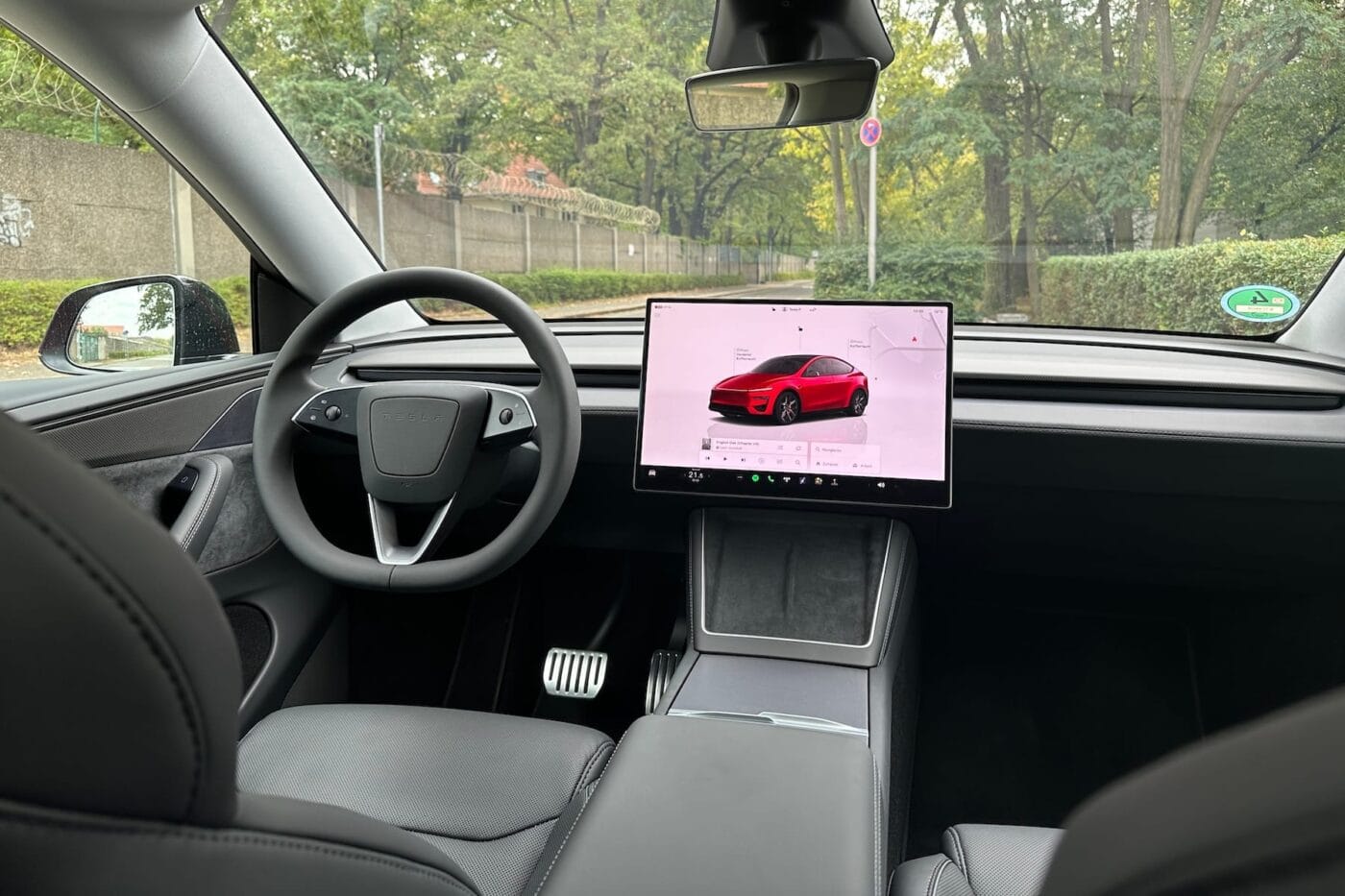


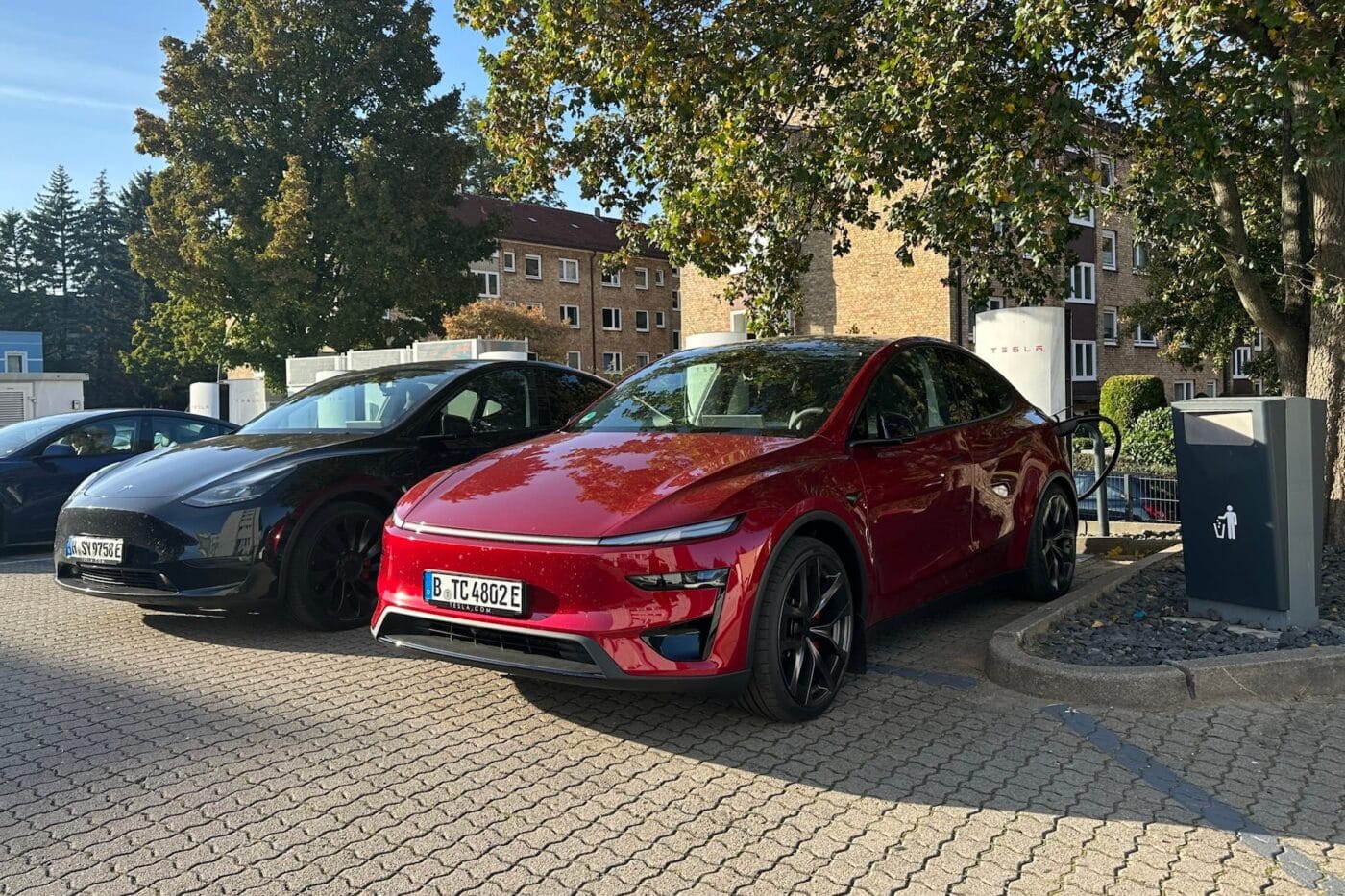
A significant step up in interior quality
The cockpit remains as minimalist as ever. As part of the redesign, Tesla has increased the display size from 15.4 to 16 inches and improved the resolution, making it particularly sharp at night. The touchscreen responds as smoothly as ever, without any noticeable delay. Since the Juniper revamp, rear passengers have gained an additional screen that can be used to control functions such as the climate control.
The driver can now also change gears in the Model Y via touch. This is a little confusing at first, but you get used to it quickly. The following function is similar: when parking, the SUV anticipates whether you need to go forward or reverse and automatically selects the appropriate gear. Before pressing the accelerator, it’s worth double-checking that the software has chosen the correct one.
The interior is rather dark overall, but it looks very stylish. The seats offer good lateral support with their high side bolsters and give you the feeling of being securely held in place. Nevertheless, they still feel comfortable on long journeys. A neat detail is the large badge with Tesla’s performance logo integrated into the seat backrest, which gives the car an added touch of class. Carbon trim elements and aluminium pedals complete the performance look.
In terms of quality, the Model Y Performance has made a major improvement with the redesign. While cost-cutting measures are now clearly evident in the interiors of some European rivals, there is little to criticise in the updated Model Y Performance from the Gigafactory in Grünheide. The interior looks solid overall, and the components are neatly fitted throughout. The once rather cheap-looking materials are also largely a thing of the past.
Conclusion
Various tests have already shown that Tesla has optimised the Model Y in exactly the right areas as part of the ‘Juniper’ update. In the Performance variant, the improvements to the chassis and overall quality are even more noticeable – and, given the higher price, also carry more significance.
The bottom line is that the Americans have put a convincing all-rounder on the road with the new Model Y Performance. It impresses with its acceleration and offers a dynamic overall character, while remaining comfortable and, depending on driving style, surprisingly efficient. Above all, it has matured visually and now looks distinctly sportier than its predecessor.
Added to this is Tesla’s own ecosystem, including its charging network, which further strengthens the already good price-performance ratio. €62,970 is a lot of money, but most of its performance-focused competitors are even more expensive – and many are less practical as family or long-distance cars.
Whether you choose Tesla’s performance SUV or one of its rivals ultimately comes down to personal preference. However, Elon Musk’s carmaker appears to have long since overcome its image slump. After months of challenges, the Model Y was once again the best-selling car in Europe in September – hardly surprising given its well-rounded package and competitive pricing.


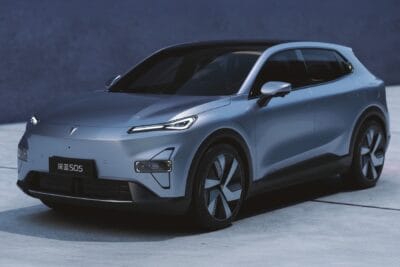

3 Comments